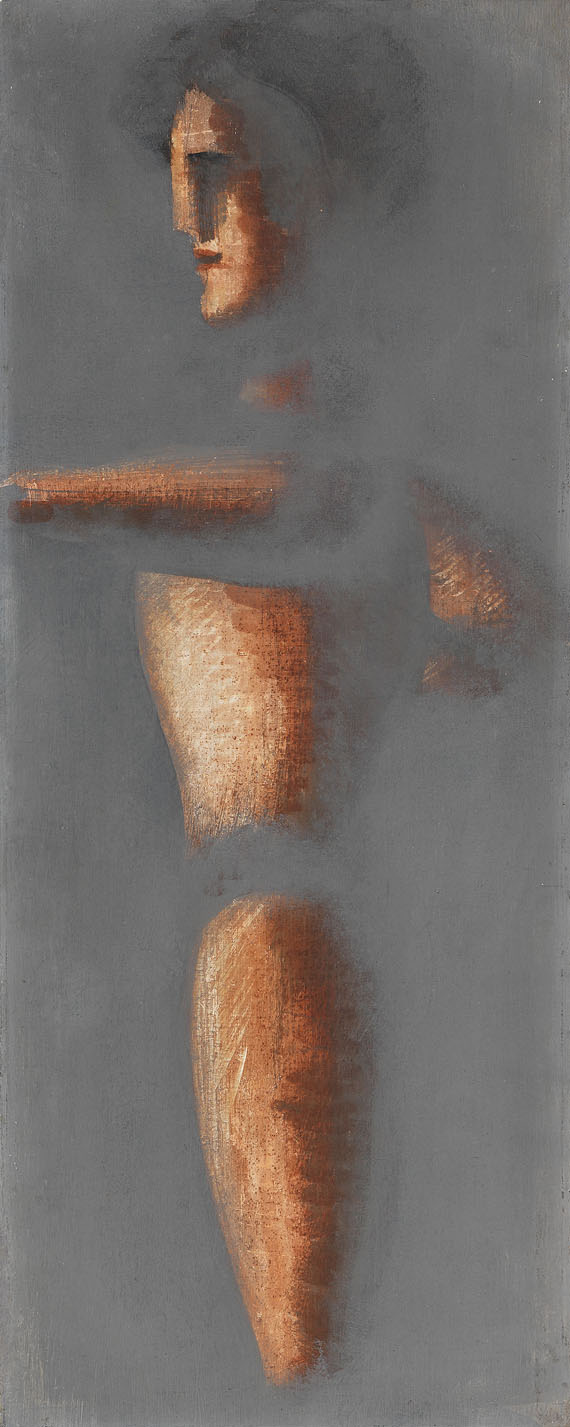Dictionary


Bauhaus Weimar
The Bauhaus, founded by Walter Gropius in 1919, had its first location in Weimar up until 1925. Among the first teachers appointed by Gropius to teach at the "Staatliche Bauhaus in Weimar", were Lyonel Feininger, Johannes Itten and Gerhard Marcks, joined by Paul Klee and Oskar Schlemmer in 1921, by Wassily Kandinsky in 1922 and by László Moholy-Nagy in 1923. Johannes Itten (1888-1967) played a decisive role: He developed the obligatory prep courses in which students were supposed to practice the basics of harmonious design, he also headed several workshops until he left the Bauhaus in 1923. In these workshops, among them textile-, metal- and furniture workshops, the students were trained in crafts, which were regarded as an indispensable basis for all art activities.
The first style period of the Bauhaus in Weimar was strongly influenced by Expressionism. A nice example thereof is the wooden paneling in "Zackenstil" (Zigzag style) in the Haus Sommerfeld in Berlin, which was completed as a work of art by Bauhaus members in 1920-21.
A paradigm shift with a more technical and rational orientation took place as of 1923, since the circumstances of the industrial age required a stronger examination. Technology and art were regarded as a unity. The focus of the first large Bauhaus exhibition in 1923 was on housing estates and terraced houses. Walter Gropius began to develop a "Baukasten im Großen" (large-scale construction kit), which was supposed to offer standardized modules for efficient house constructions at an affordable price.
Theo van Doesburg (1883-1931), co-founder of the movement "De Stijl" (The Style) had strong influence on the artistic changes that were taking place, as he offered art courses in Weimar that were attended by many Bauhaus students. Seating furniture by Marcel Breuer (1902-81), with its clear structure and functionality is a prime example of the influence of Constructivism and "De Stijl".
The Bauhaus masters decided to cancel their contracts in Weimar giving in to the pressure of the right-wing conservatives that were ruling Thuringia as of 1924 and favored a closure. The city of Dessau in Saxony-Anhalt became the new seat of the Bauhaus as of 1925.
The Bauhaus, founded by Walter Gropius in 1919, had its first location in Weimar up until 1925. Among the first teachers appointed by Gropius to teach at the "Staatliche Bauhaus in Weimar", were Lyonel Feininger, Johannes Itten and Gerhard Marcks, joined by Paul Klee and Oskar Schlemmer in 1921, by Wassily Kandinsky in 1922 and by László Moholy-Nagy in 1923. Johannes Itten (1888-1967) played a decisive role: He developed the obligatory prep courses in which students were supposed to practice the basics of harmonious design, he also headed several workshops until he left the Bauhaus in 1923. In these workshops, among them textile-, metal- and furniture workshops, the students were trained in crafts, which were regarded as an indispensable basis for all art activities.
The first style period of the Bauhaus in Weimar was strongly influenced by Expressionism. A nice example thereof is the wooden paneling in "Zackenstil" (Zigzag style) in the Haus Sommerfeld in Berlin, which was completed as a work of art by Bauhaus members in 1920-21.
A paradigm shift with a more technical and rational orientation took place as of 1923, since the circumstances of the industrial age required a stronger examination. Technology and art were regarded as a unity. The focus of the first large Bauhaus exhibition in 1923 was on housing estates and terraced houses. Walter Gropius began to develop a "Baukasten im Großen" (large-scale construction kit), which was supposed to offer standardized modules for efficient house constructions at an affordable price.
Theo van Doesburg (1883-1931), co-founder of the movement "De Stijl" (The Style) had strong influence on the artistic changes that were taking place, as he offered art courses in Weimar that were attended by many Bauhaus students. Seating furniture by Marcel Breuer (1902-81), with its clear structure and functionality is a prime example of the influence of Constructivism and "De Stijl".
The Bauhaus masters decided to cancel their contracts in Weimar giving in to the pressure of the right-wing conservatives that were ruling Thuringia as of 1924 and favored a closure. The city of Dessau in Saxony-Anhalt became the new seat of the Bauhaus as of 1925.
Offers




